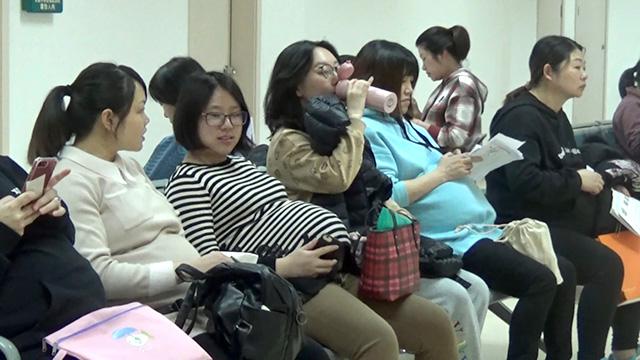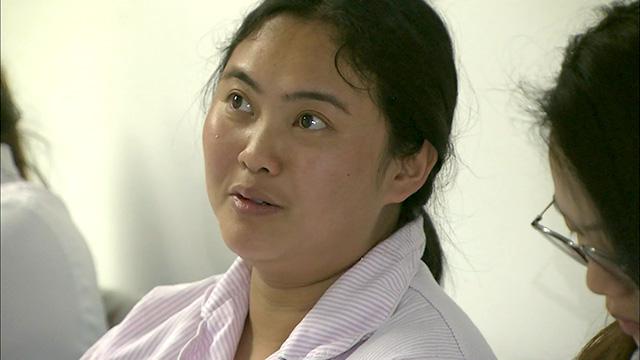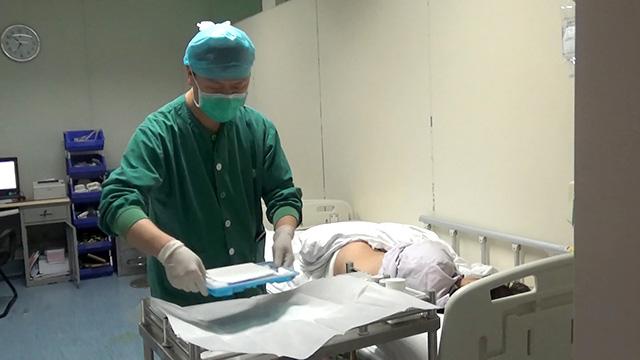Many people in China believe that pain during childbirth is unavoidable due in part to the rarity of pain-relieving options. A medical society survey found that less than 10 percent of women who gave birth in clinics were given epidural anesthesia.
A mother in Beijing says, "Pain-free delivery is not that common. There aren't many hospitals that can provide those procedures or doctors who recommend them."
In 2017, a woman in labor jumped to her death from a five-story hospital in Shaanxi province. Police say she could no longer bear the pain.
The news shocked China. The government responded last November with a plan to promote pain-free delivery. A pilot program is in effect at First Maternity and Infant Hospital in Shanghai. It now has anesthesiologists on duty around the clock, ready for when women go into labor.

Hu Danfeng is about to give birth to her first and much-wanted baby. Two hours into labor, she is in so much pain she can barely speak. Her doctor injects anesthesia into her lower back. She tells us, "It was so painful that I thought I'd rather die. But now, I don't feel any pain. A few minutes ago, I couldn't even open my eyes!"
On the following day, she gets what she was waiting for, a baby girl. She is impressed by how the injection freed her from excruciating pain. "I didn't feel much pain while delivering my baby. I'd recommend other expectant mothers to choose pain-free delivery," she says.

The hospital in Shanghai handles 30,000 childbirths a year. 80 percent of them are pain-free deliveries. In the procedure, medication is injected near the spinal cord, where a slight error could cause the mother's heart to stop. Anesthesiologists must maintain a sharp focus. But one we spoke to had worked 22 hours straight, treating 41 women.
Zhao Qingsong, an anesthetist working at this hospital, says, "We always have to attend to three or four patients at the same time. We're too busy to drink water, let alone eat a meal."
Anesthesiologists are responsible for both the mother and the child, but few hospitals can offer suitable pay. That's another factor preventing pain-free deliveries from becoming widespread.

Wan Xiaoping, Director of Shanghai First Maternity and Infant Hospital, points out, "Medical items related to pain-free delivery, such as anesthesia, are not covered by China's medical insurance system. There is no standard for the hospital to bill those expenses to the patient, and nothing the hospitals can do about it."
Women in China are having fewer children, something that is now seen as a serious problem for the country. There are likely to be even stronger calls for the government to create an environment in which women can give birth without worrying about pain.

